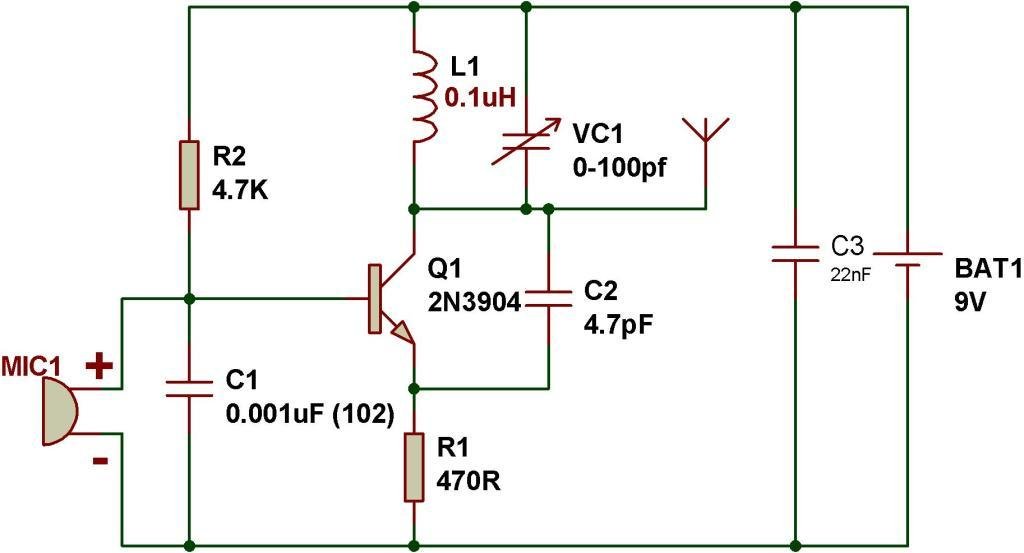Hello,
For my project I need to build a variable frequency emitter, with a frequency between 100MHz and 3500Mhz.
I saw some simple RF circuits on the Internet but I don't think they can reach such high frequencies.
Here is a circuit I've found :

I don't need to transfer any information, so I can get rid of the mic.
I guess that I have to change the inductance and/or the capacitance of the variable capacitor to reach higher frequencies.
But what about the other capacitors and the transistor? Do I have to change them?
And if I want to increase the emission power :
Does a simple increase of the input voltage increase the emission intensity? Or can it break some components?
Thanks in advance for your answers
For my project I need to build a variable frequency emitter, with a frequency between 100MHz and 3500Mhz.
I saw some simple RF circuits on the Internet but I don't think they can reach such high frequencies.
Here is a circuit I've found :

I don't need to transfer any information, so I can get rid of the mic.
I guess that I have to change the inductance and/or the capacitance of the variable capacitor to reach higher frequencies.
But what about the other capacitors and the transistor? Do I have to change them?
And if I want to increase the emission power :
Does a simple increase of the input voltage increase the emission intensity? Or can it break some components?
Thanks in advance for your answers



